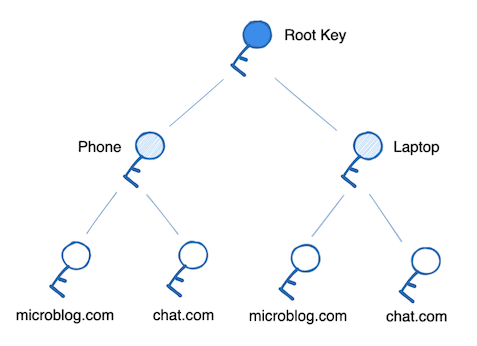At a high level, User Controlled Authorization Networks (UCANs) are a way of doing authorization (“what you can do”) where users are fully in control. There’s no all-powerful authorization server, or server of any kind required. Everything that a users is allowed to do is captured directly in a key or token, and can be sent to anyone that knows how to interpret this format.
UCANs work more like movie tickets or a festival pass between multiple venues. No one needs to check your ID; who you are is irrelevant. For example, if you have a ticket to see Citizen Kane, you are admitted to Theater 3. If you cannot attend an event, you can hand this ticket to a friend who wants to see the film instead, and there is no coordination required with the theater ahead of time.
from the UCAN working group spec

The master keypair requires strong security and should not be duplicated to multiple locations or enter low-security environments such as the browser. This makes it difficult to access every time a new repository commit needs to be produced. Therefore we issue child keypairs from the master keypair in the form of UCANs, a JWT-style token that contains a permission description. UCANs can prove the authority of some key to undertake a given action, or produce new UCANs with a subset of their authority. Through this mechanism, a user is actually associated with many (likely hundreds) of keys, each belonging to a given context (a device or an application). These keys are granted only the authority they require from the root signing key.
from Bluesky’s ADX
Since anything with a private-public keypair can generate a DID, UCANs can be an auth layer that naturally plugs into existing identity primitives and services